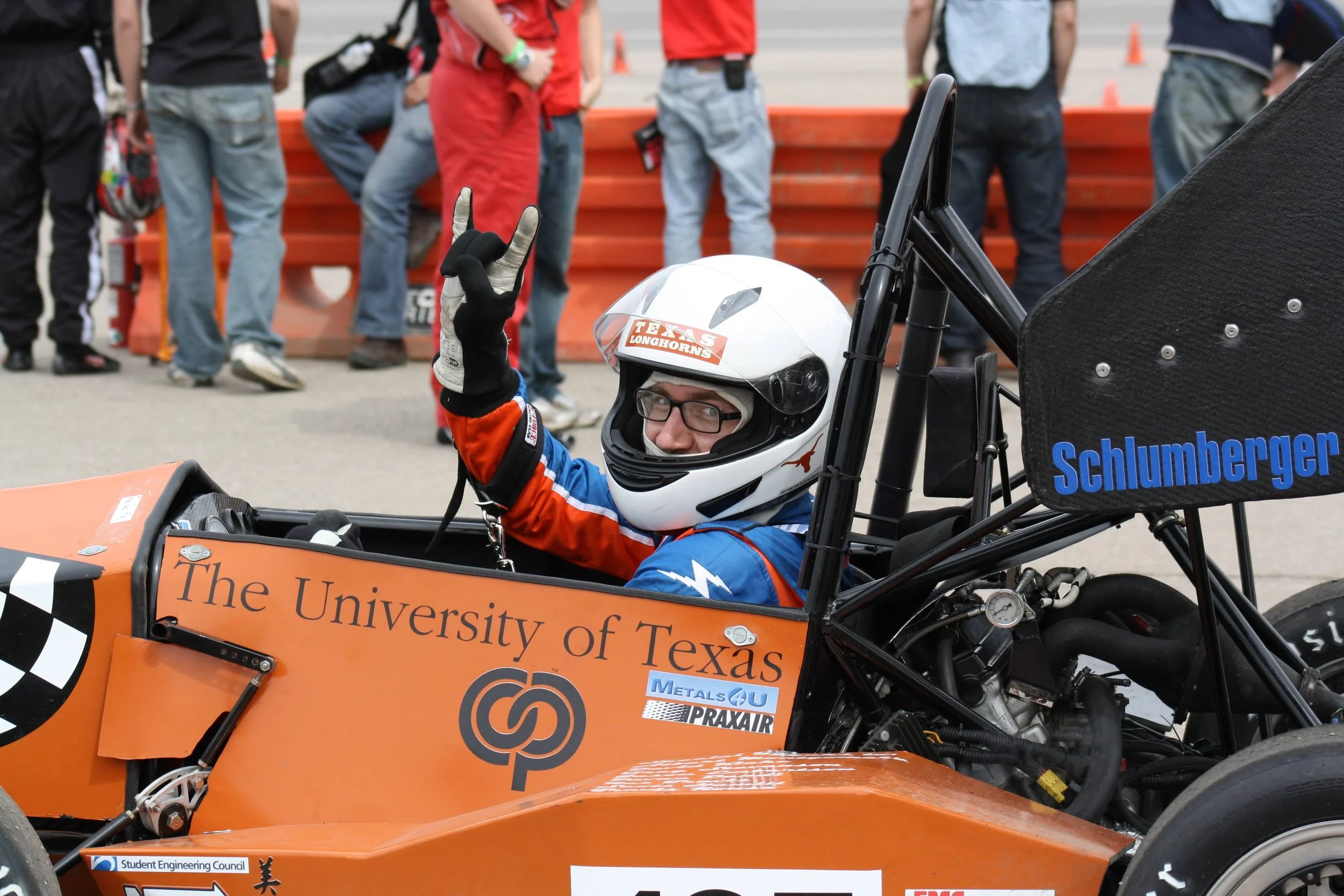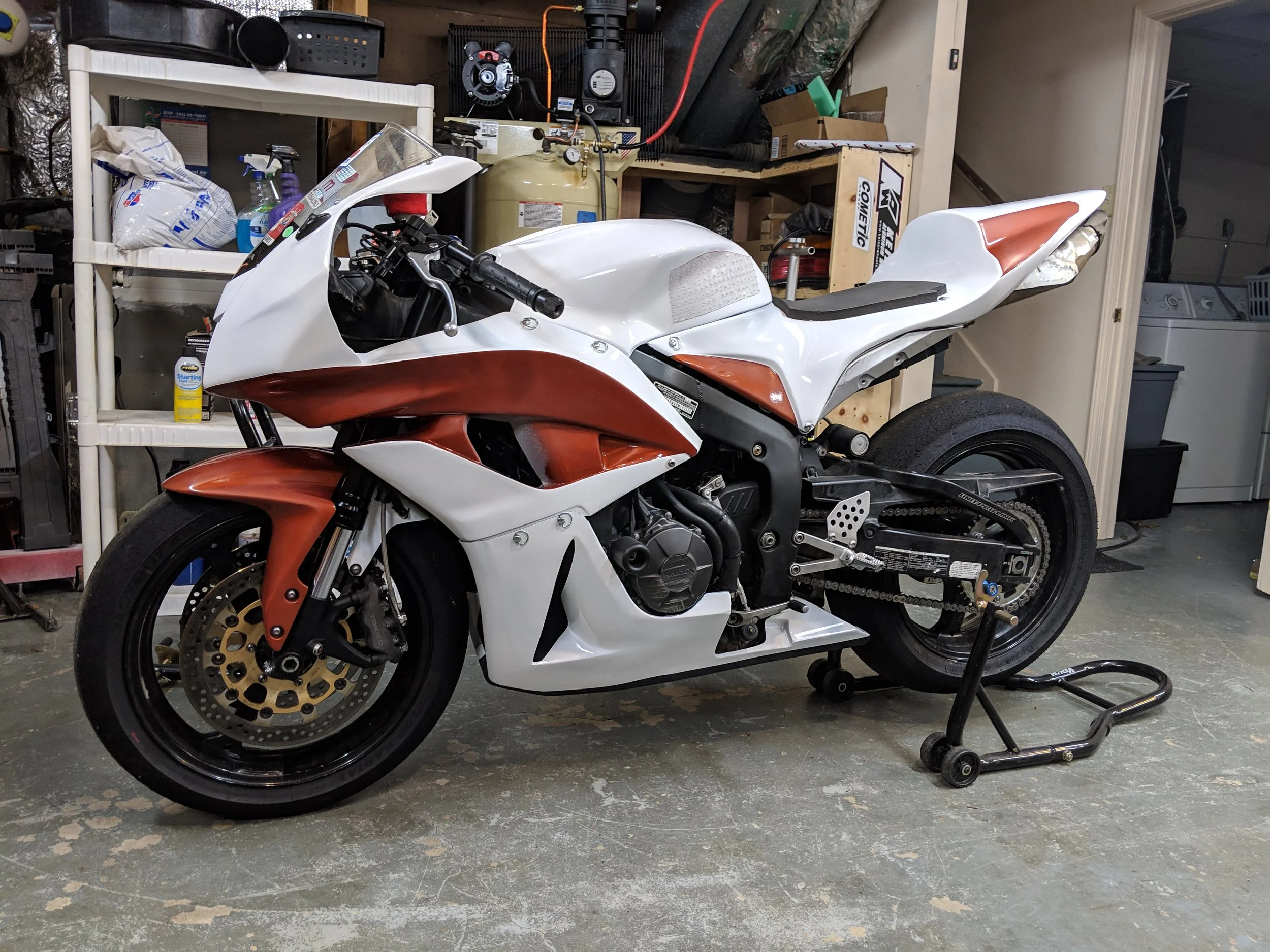Introduction
Jan 18, 2022 by Adam Miller
The Experience tab gives a good high-level summary of my racing background but does little to communicate who I am, what I’m about, why this is so important to me, and why I just might be worth supporting.
I’m a huge fan of racing of all kinds. It’s been a part of my life for as long as I can remember, from watching Rusty Wallace lap the field in NASCAR with my Dad to gasping at Valentino Rossi’s famous dive past Casey Stoner at Laguna Seca’s corkscrew. For one reason or another, I wasn’t able do a whole lot of racing as a kid, but I did some other things that gave me some early intuition about it. My Dad taught my brother and I to drive at completely inappropriate ages, but, East Texas in the early ‘90s was a different time and place and a kid driving a truck around on FM roads with a parent in the passenger seat was pretty common. An important note about my Dad is that he raced cars in his younger years so the lessons my brother and I received were a little different than “put it in drive and point it straight”. We never did anything dangerous, but we learned some things not commonly taught in driver’s ed.
Those drives evolved to spending as much time as possible whipping through country roads with go-karts, dirtbikes, and four wheelers. Seeds were planted that would bear fruit years later in FSAE racing. In the fall of 2008, during my first semester at the University of Texas, I showed up to a drive day being hosted by the Longhorn Racing team with no expectations other than to have some fun. After a handful of laps, I tied the fastest time of the day set by the fastest driver on the team and my love affair with sanctioned racing began. The FSAE racing is another story for a different time and place, but it was a critical first step into racing.
FSAE Michigan, 2010
Toward the end of college I began making a return back to my two-wheel roots. It started, innocently enough, when I began biking to class every day. That trip, however, was about 15 miles in one direction. With a bag full of engineering textbooks, even at a fast pace, it took 2 hours out of every day which wasn’t tenable to balance alongside work and study. Against the wishes of family, I traded up to a 50cc scooter, got my M endorsement, and started riding to school. The scooter was a far cry from the dirtbike my brother and I shared, but it was an important step to bring the memories of riding back. It couldn’t have been 6 months before I jumped from a 50cc scooter to a 120HP, 600cc sportbike. In hindsight that was objectively stupid, but I survived. That CBR was the gateway eventually leading to fully-developed trackday bro addiction and, finally, to sanctioned motorcycle racing.
My 2nd Motorcycle Trackday, Putnam Park Road Course, 2012
After years of off again on again trackday riding, I finally decided it was time to go racing. Over the winter of 2018 I fully converted my trusty CBR from all the way back in college to a race bike. Granted, it was almost completely stock and had a tired powerplant, but it looked the part and was compliant with the rules so, at the time, it was good enough.
The Completion of My Descent into Motorcycle Racing Insanity, Atlanta, GA, 2019
Since I knew that bike so very well, it didn’t take very long to have success. I was fourth in my first race ever, I ran off the track in my second race and didn’t finish too well, I gathered myself up for my third race and, after a great battle with a fellow racer, I found myself one step down from the top of the podium. It was a great way to start racing motorcycles.
My First Podium, WERA Sporsman Series, Talladega GP, 2019
After that start, life took some turns and put my ambitions to fight for a championship on hold. My wife and I moved from Georgia to Colorado and both had serious professional adjustments, we had our first child, and the Pandemic hit. Any one of these things would have been enough to derail a race season. All 3 at nearly the same time put the proverbial brakes on any notions of racing. After some time, however, I was back in the saddle again, so to speak. I returned to the track to race again with the MRA in 2021 on a Ducati 848. On paper, the Duc better suits my riding style than did the Honda as I tend to target hard braking as a source of strength rather than mid corner speed.
My success on the Duc was not immediate as it was on the Honda, however. I missed out on the podium in my second race by a bike length, but even that was in spite of the fact that it was taking some time to learn the new bike and the new tracks. My takeaway after a few rounds was that, as long as you’re brave and you’re hitting your markers, the 848 is unbeatable on the brakes and it makes really good power that you can put down immediately on corner exit, but you lose a lot of time in the turns compared to the other Supersports. This is something I almost paid a hefty price to figure out while trying to pace an R6 through a long sweeper. Even with the stock suspension set to the limits of what’s needed to make a bike turn well, the result was some nasty front end chatter before I even came close to matching the R6 in corner speed. With the layout of High Plains Raceway, the main track used by the MRA, not suiting stop and go bikes very well, I concluded that I couldn’t be competitive without finding a way to stop giving up so much time mid-corner.
MRA Round 4, HPR Full Course, 2021
After some head scratching and a little research, it seemed that a front end geometry change at the triple tree was the best known solution to the problem; lose a little in braking, gain a lot mid corner. At about the time I was getting ready to order parts to try this out, a friend of mine told me he was selling his fully prepped 848 fitted with the parts I wanted to try and then some. He was gracious enough to let me test ride the bike during free practice for Round 7; I didn’t need a lap timer to understand that I was going 2-3 seconds faster per lap almost instantly. The bike felt like a slightly more stable version of the Honda with a healthy power bump to go with it. It was elementary math to understand that purchasing my friend’s bike made much more financial sense than trying to build my own to the same specs. After some discussion on the home front, we got the new bike now known in the Miller house as “Duc Prime”:
“Duc Prime”, 2021
That about brings things to current day. I have a list of weaknesses in my riding from last season that I’ll be trying to fix over the winter with whatever track time I can get, some things with my physical condition that I’ll also be trying to address so that I can ride at 100% for an entire race, including endurance races, and some preparation on the bike and in my bank account to compete for a full season with a target no lower than winning a championship.
The financial aspect is where I need help. A full season of racing is a minimum of around $7000 to pay for tires, race fees, and other consumables on the bike. Doing this out of pocket is a big ask. Unfortunately I didn’t try this in my mid twenties and, at 35 years old, a huge portion of money goes to the standard items of a family man. On my birthday this year, while reflecting on my mortality as people do when they realize they’re not young adults anymore, I wrote down a list of 5 things I couldn’t bear to go through life without trying. I’ll let anyone reading this figure out one of the things on that list. Suffice to say that if you’re able to help me fund a full season, you’re not just helping a racer, you’re helping someone realize a life goal.
Cheers,
Adam Miller







